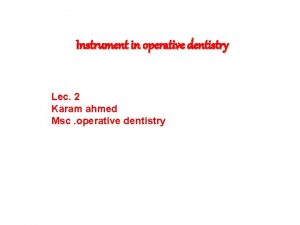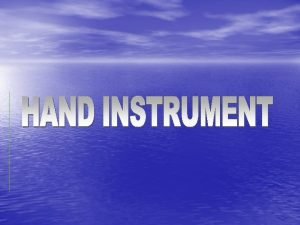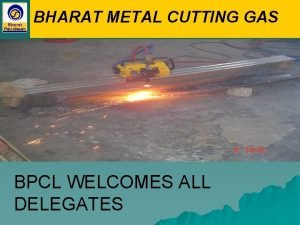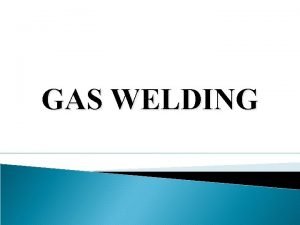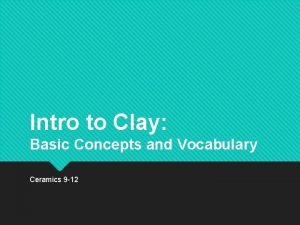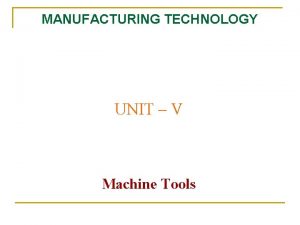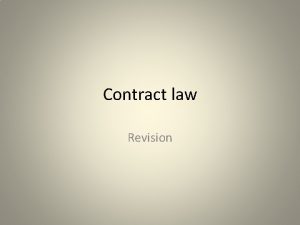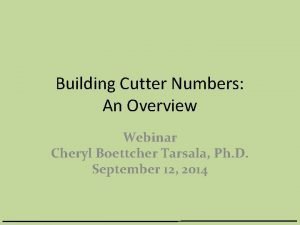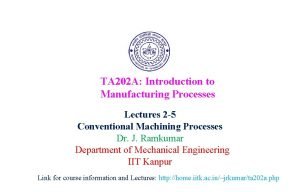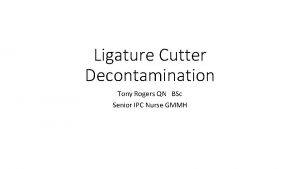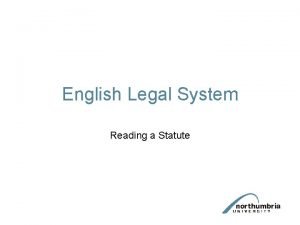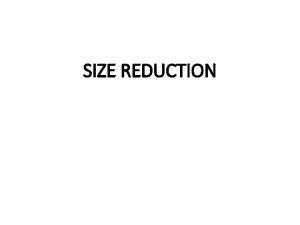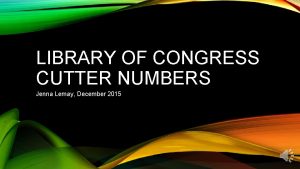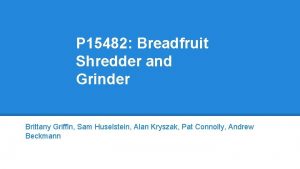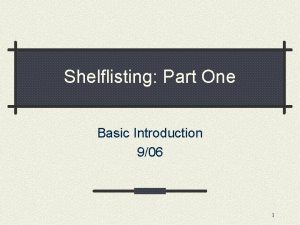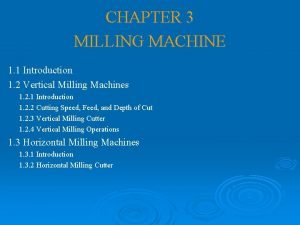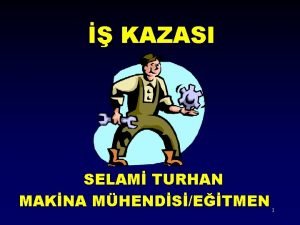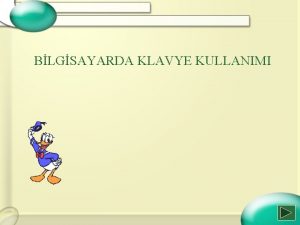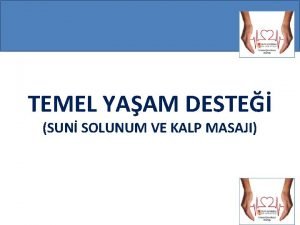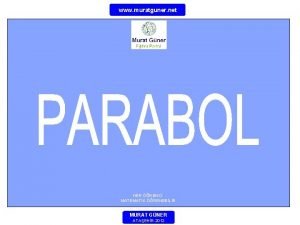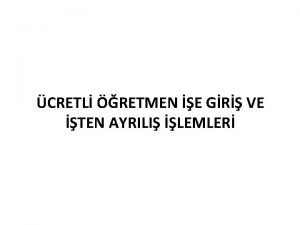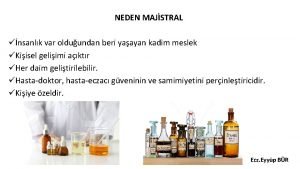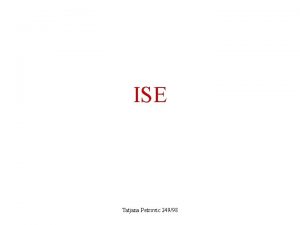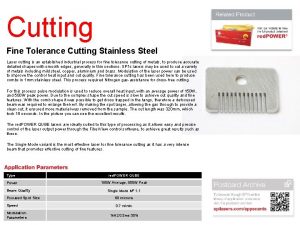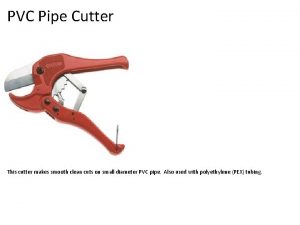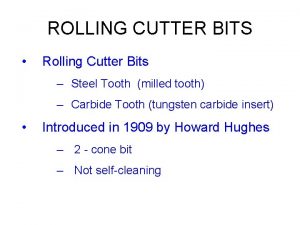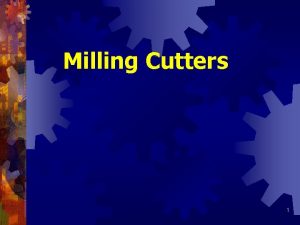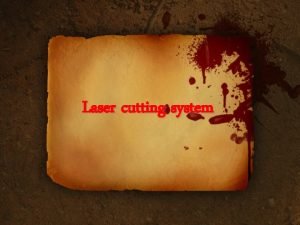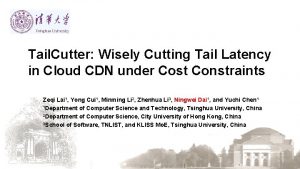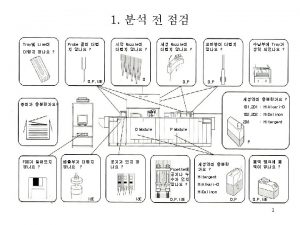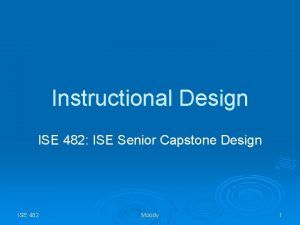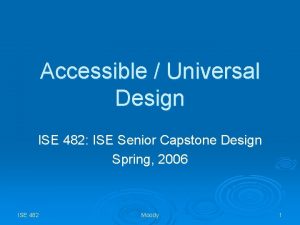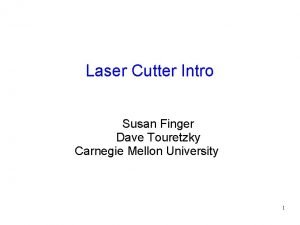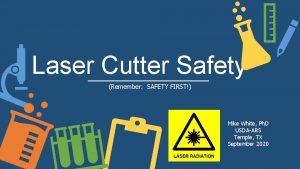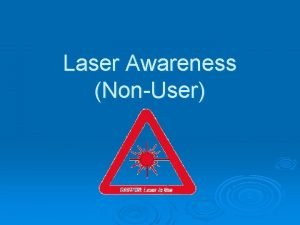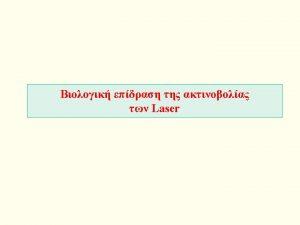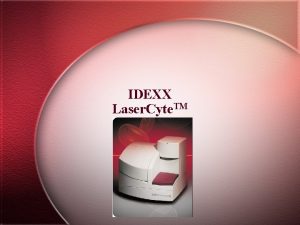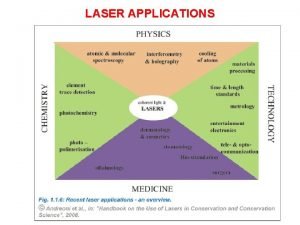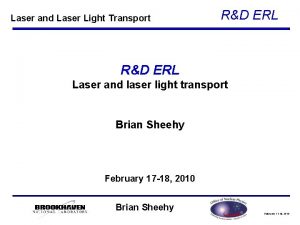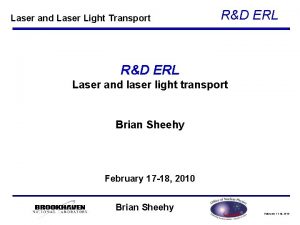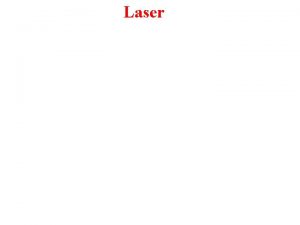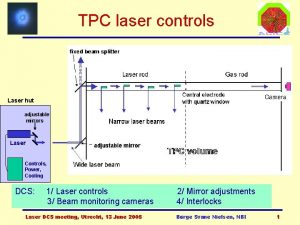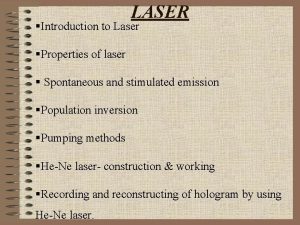LASER CUTTING ISE WHAT IS A LASER CUTTER




































- Slides: 36

LASER CUTTING ISE

WHAT IS A LASER CUTTER? ● ● Laser stands for Light Amplification by the Stimulated Emission of Radiation The laser is a monochromatic beam of light created by the light amplification process ● A Laser cutters uses a gas laser to cut holes or lines into a workpiece

HOW A LASER WORKS ● Gas mixture (active medium) ● Partially reflecting mirror ● Totally reflecting mirror ● Power supply (pump)

HOW A LASER WORKS ● Chamber is filled with an active medium Active medium Totally reflecting mirror Partially reflecting mirror

HOW A LASER WORKS ● The pump provides energy to gas ● Atoms in active medium become excited Active medium Totally reflecting mirror Partially reflecting mirror

HOW A LASER WORKS ● ● Atoms absorb energy from the pump, which causes them to leave the ground state This means electrons jump to a higher energy level ● When an atom de-excites, it gives off energy in the form of a photon

HOW A LASER WORKS ● Energy level jumps are the same for a single gas ● Light given off is all the same wavelength, or monochromatic

HOW A LASER WORKS ● Atoms de-excite and photons are given off Active medium Totally reflecting mirror Partially reflecting mirror

HOW A LASER WORKS ● Photons oscillate between two mirrors ● Photons collide with other excited atoms which give off more photons Active medium Totally reflecting mirror Partially reflecting mirror

HOW A LASER WORKS ● ● When a photon collides with an excited atom, it causes it to drop to a lower energy state, giving off another photon This is called the stimulated emission phenomenon

HOW A LASER WORKS ● The stimulated photons have the same direction and phase as the incident photon

HOW A LASER WORKS ● Photons pass through partially reflecting mirror and create a beam Active medium Totally reflecting mirror Partially reflecting mirror

HOW A LASER WORKS

HOW A LASER CUTTER WORKS ● Laser ● Beam delivery system ● Auxiliary devices ● Worktable

HOW A LASER CUTTER WORKS ● A shutter mirror allows the laser into the guidance system

HOW A LASER CUTTER WORKS ● The guidance mirror reflects the beam to the lens

HOW A LASER CUTTER WORKS ● ● The lens focuses the beam on the workpiece through a nozzle Pressurized gas prevents scrap from the workpiece from damaging the lens or from reflecting the beam

HOW A LASER CUTTER WORKS ● Molten metal is either allowed to fall off, is removed by the pressurized gas, or is suctioned out

HOW A LASER CUTTER WORKS ● A CNC drive controls the table which moves the workpiece being cut

LASER CUTTERS

LASER CUTTERS

LASER CUTTERS

TYPES OF LASER CUTTING ● Vaporisation ● Fusion cutting ● Reactive fusion cutting ● Controlled fracture ● Scribing ● Cold Cutting ● Laser Assisted Oxygen Cutting

VAPORISATION ● Laser heats up the surface to boiling which creates a small hole ● Laser is rapidly reflected by boiled material which deepens the hole ● Material is ejected from bottom of workpiece ● Pulsating laser is used ● Good for non-melting materials

FUSION CUTTING ● Melt and blow ● Hole is made at edge of workpiece ● Gas jet blows away molten material ● Worktable moves the material under the laser is is constantly cut

REACTIVE FUSION CUTTING ● Melt, burn, and blow ● Similar to fusion cutting ● Gas reacts with material causing it to melt

CONTROLLED FRACTURE ● Thermal stress cracking ● Good for brittle materials ● Laser creates a controlled crack in the material

SCRIBING ● Laser makes a groove in the workpiece ● Workpiece is then broken at the groove line ● Creates little debris

COLD CUTTING ● Groundbreaking technique ● Uses a ultraviolet laser with 4. 9 e. V photons ● The bond energy for most organic materials is around this value ● Photons hitting these bonds will cause the bonds to break

LASER ASSISTED OXYGEN CUTTING ● LASOX Process ● Laser ignites oxygen stream ● Material is cut by burning oxygen ● Low power

ADVANTAGES ● Smooth edge ● Much faster than many similar techniques ● Extremely accurate with high repeatability ● Fully automated

ADVANTAGES ● Narrow kerf width

ADVANTAGES ● Shape of cut can be controlled

ADVANTAGES ● No tooling to replace ● Cost to operate less than many similar processes ● Can be used for almost any type of material ● Virtually silent

DISADVANTAGES ● Depth of material is limited ● Certain reflective metals cannot be cut ● Cut edge is brittle ● Difficult to cut stacks of workpieces ● Material can become warped ● Initial investment is high

 In drilling machine mcq
In drilling machine mcq Modified pen grasp diagram
Modified pen grasp diagram Dental bur
Dental bur The appropriate cutting tool used in cutting fabrics
The appropriate cutting tool used in cutting fabrics Single point cutting tool drawing
Single point cutting tool drawing Direct cutting instruments
Direct cutting instruments Bharat metal cutting gas properties
Bharat metal cutting gas properties Introduction to gas welding
Introduction to gas welding Wire clay cutter ceramics definition
Wire clay cutter ceramics definition Up milling and down milling
Up milling and down milling Couturier v hastie
Couturier v hastie Sintered gear manufacturing process
Sintered gear manufacturing process Cutter numbers explained
Cutter numbers explained Milling cutter nomenclature
Milling cutter nomenclature Milling cutter parts
Milling cutter parts Normas de seguridad del cutter
Normas de seguridad del cutter Ligature cutters nhs
Ligature cutters nhs Greenleaf carbide
Greenleaf carbide Cutter v eagle star 1998
Cutter v eagle star 1998 Library of congress cutter table
Library of congress cutter table In end runner mill, size reduction is done by
In end runner mill, size reduction is done by Cutter diameter compensation
Cutter diameter compensation Cutter number examples
Cutter number examples Scribd
Scribd Cutter ficha catalográfica ufpb
Cutter ficha catalográfica ufpb Ankle tape cutter
Ankle tape cutter Cutter number examples
Cutter number examples Nicole
Nicole Milling machine formula
Milling machine formula Ise escalation case workday
Ise escalation case workday Bir kişiye maddeye cihaza işe veya iş yürütümüne
Bir kişiye maddeye cihaza işe veya iş yürütümüne Pause break tuşu ne işe yarar
Pause break tuşu ne işe yarar Cisco ise mdm
Cisco ise mdm Baş çene pozisyonu nedir
Baş çene pozisyonu nedir Parabol denklemi
Parabol denklemi ücretli öğretmen işe giriş bildirgesi
ücretli öğretmen işe giriş bildirgesi Precipite blanche nedir
Precipite blanche nedir

